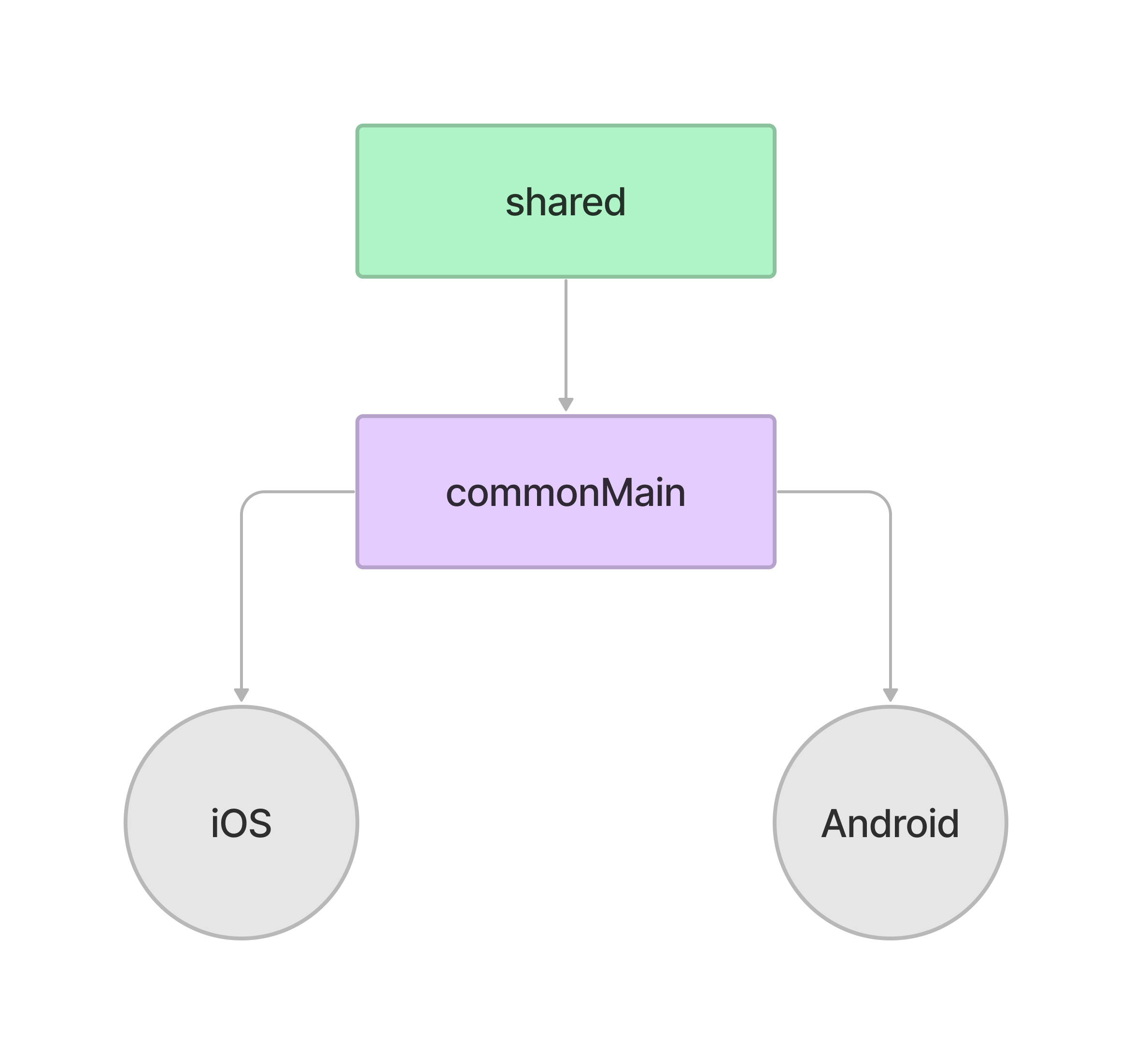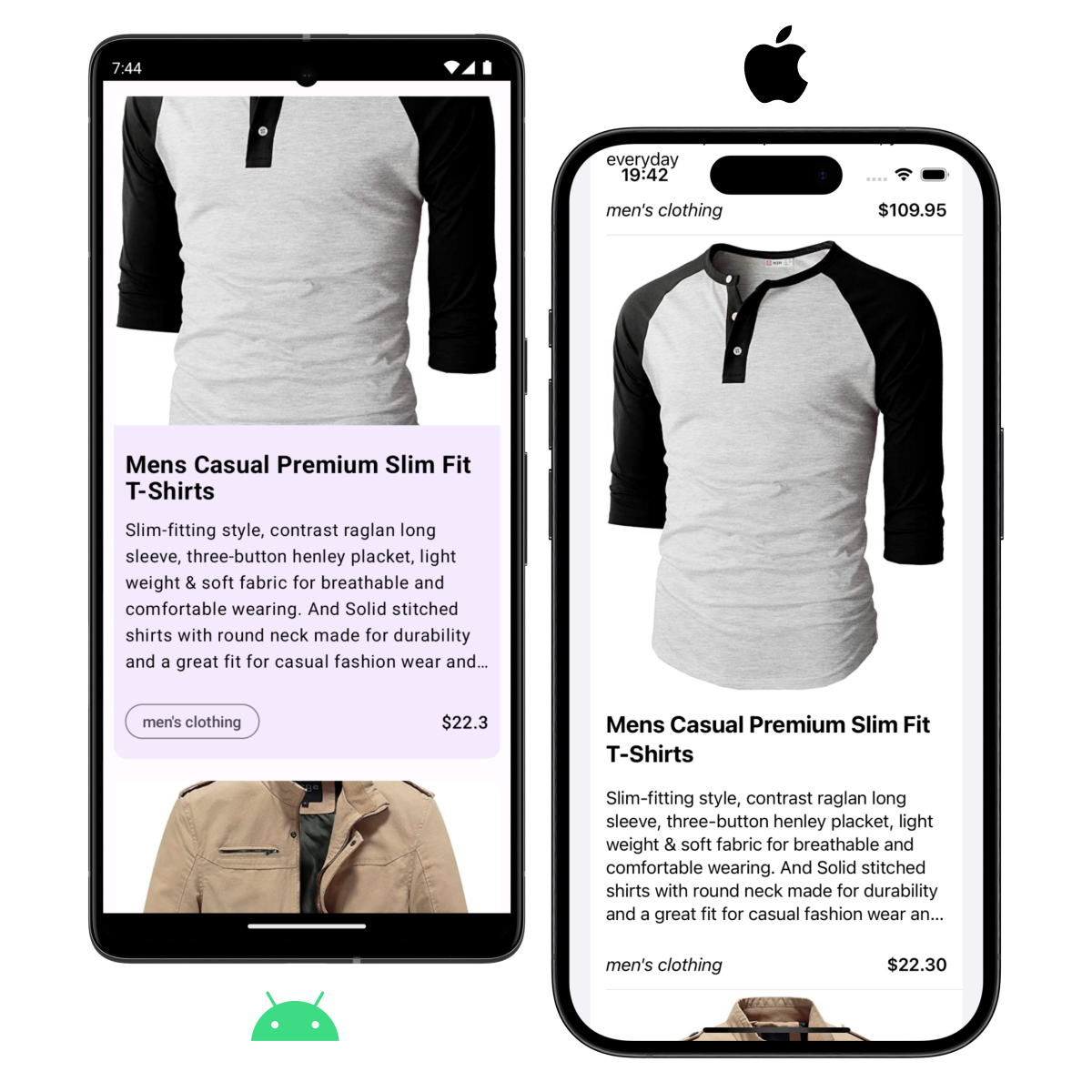
Shared Kotlin Logic
The shared code is written in Kotlin and contains business logic, algorithms, or other non-platform-specific functionality. This shared code is then utilized by both the Android and iOS parts of the project, allowing you to maintain a single code-base for certain components.
Kotlin & Swift
✅ Understand the Kotlin Multi-platform project structure.
✅ Learn about Expect/Actual concepts.
✅ Learn about the difference between Targets and Source Sets.
✅ Prepare the project environment for a multi-platform development.
✅ Generate the project template on auto-pilot.
✅ Build Native UI in both iOS and Android.
✅ Share the business logic.
✅ Explore the Kotlin compiler generated code for Swift.
✅ Use SKIE by Touchlab to help you out.
✅ Ktor client KMP library for networking.
✅ Kermit KMP library for logging.
✅ Learn about SwiftUI along the way.
✅ Learn Swift language through basic examples.
Powerful Native Performance
By leveraging the power of native development, apps crafted with Kotlin Multiplatform deliver exceptional speed, responsiveness, and efficiency on both iOS and Android platforms. With a single, unified codebase, developers can optimize and fine-tune their applications to harness the full potential of each platform, ensuring a seamless and native-like user experience.


Kotlin
With Kotlin Multi-platform, it extends its capabilities beyond Android, allowing developers to share code between different platforms, including iOS.

Android
With Kotlin Multi-platform, developers can extend their reach beyond Android and use the same Kotlin code-base to target iOS.

iOS
iOS development has been synonymous with Swift or Objective-C. Kotlin Multi-platform introduces the possibility of using Kotlin for iOS app development as well.
Course Content
- Introduction (1:38)
- Course Requirements (0:57)
- What is Kotlin Multiplatform? (4:47)
- Understanding the Multiplatform Project Structure (4:58)
- Target vs Source Sets (8:01)
- Expect/Actual Mechanism explained (5:16)
- Choosing an IDE (2:55)
- Preparing the Environment (2:31)
- Generate and Explore a KMP for Mobile Project Template (10:46)
- Project Source Code
